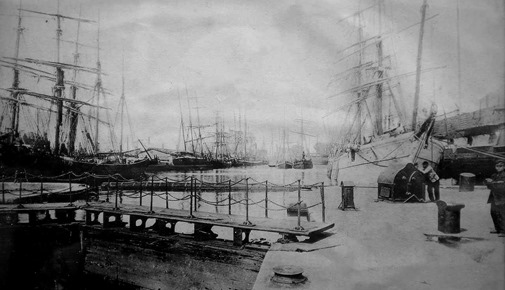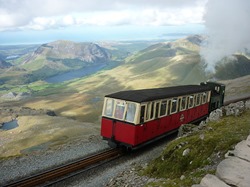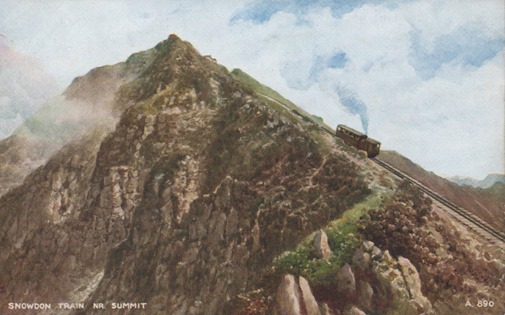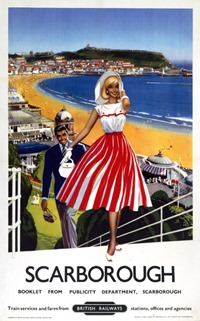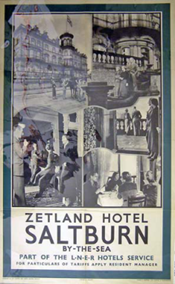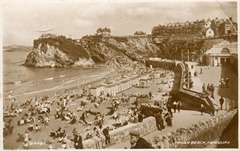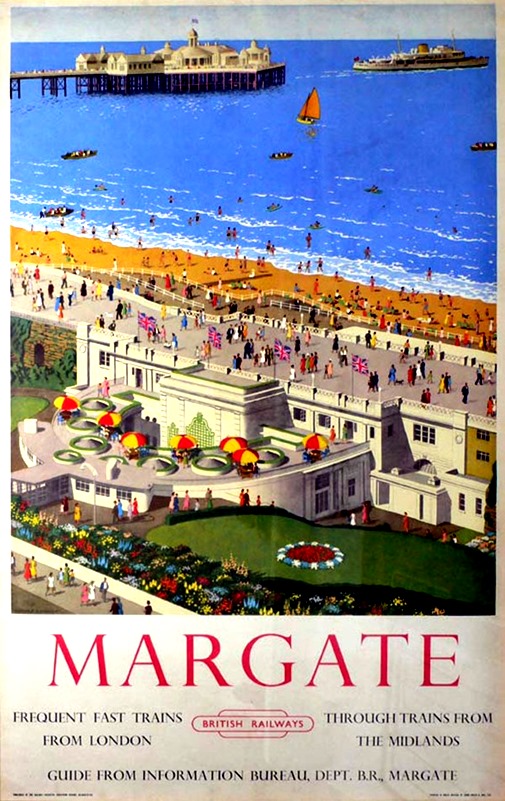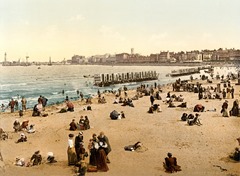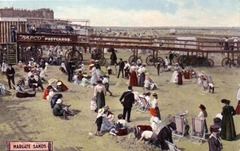
Somerset ( i/ˈsʌmərsɛt/ or /ˈsʌmərsɨt/) is a county in South West England which borders Gloucestershire to the north,Wiltshire to the east, Dorset to the south-east and Devon to the south-west. It is bounded to the north and west by the Bristol Channel and the estuary of the River Severn, its coastline facing
i/ˈsʌmərsɛt/ or /ˈsʌmərsɨt/) is a county in South West England which borders Gloucestershire to the north,Wiltshire to the east, Dorset to the south-east and Devon to the south-west. It is bounded to the north and west by the Bristol Channel and the estuary of the River Severn, its coastline facing  south eastern Wales. Its traditional northern border is the River Avon.[1] Somerset’s county town is Taunton.
south eastern Wales. Its traditional northern border is the River Avon.[1] Somerset’s county town is Taunton.
Somerset is a rural county of rolling hills such as the Blackdown Hills, Mendip Hills, Quantock Hills and Exmoor National Park, and large flat expanses of land including the Somerset Levels. There is evidence of human occupation from Palaeolithic times, and of subsequent settlement in the Roman and Anglo-Saxon periods. The county played a significant part in the consolidation of power and rise of King Alfred the Great, and later in the English Civil War and the Monmouth Rebellion.
Agriculture is a major business in the county. Farming of sheep and cattle, including for wool and the county’s famous cheeses (most notably Cheddar), are traditional and contemporary, as is the more unusual cultivation of willow 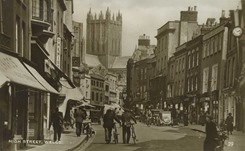 for basket weaving. Apple orchards were once plentiful, and Somerset is still known for the production of strong cider. Unemployment is lower than the national average; the largest employment sectors are retail, manufacturing, tourism, and health and social care. Population growth in the county is higher than the national average.
for basket weaving. Apple orchards were once plentiful, and Somerset is still known for the production of strong cider. Unemployment is lower than the national average; the largest employment sectors are retail, manufacturing, tourism, and health and social care. Population growth in the county is higher than the national average.
History
Main article: History of Somerset
The caves of the Mendip Hills were settled during the Palaeolithic period, and contain extensive archaeological sites such as those at Cheddar Gorge. Bones from Gough’s Cave have been dated to 12,000 BC, and a complete skeleton,  known as Cheddar Man, dates from 7150 BC. Examples of cave art have been found in caves such as Aveline’s Hole. Some caves continued to be occupied until modern times, including Wookey Hole.
known as Cheddar Man, dates from 7150 BC. Examples of cave art have been found in caves such as Aveline’s Hole. Some caves continued to be occupied until modern times, including Wookey Hole.
The Somerset Levels—specifically the dry points such as Glastonbury and Brent Knoll— also have a long history of settlement, and are known to have been settled by Mesolithic hunters. Travel in the area was helped by the construction of one of the world’s oldest known engineered roadways, the Sweet Track, which dates from 3807 BC or 3806 BC.
The exact age of the henge monument at Stanton Drew stone circles is unknown, but it is believed to be Neolithic. There are numerous Iron Age hill forts, some of which, like Cadbury Castle and Ham Hill, were later reoccupied in the Early Middle Ages.
 On the authority of the future emperor Vespasian, as part of the ongoing expansion of the Roman presence in Britain, the Second Legion Augusta invaded Somerset from the south-east in AD 47. The county remained part of the Roman Empire until around AD 409, when the Roman occupation of Britain came to an end. A variety of Roman remains have been found, including Pagans Hill Roman Temple in Chew Stoke, Low Ham Roman Villa and the Roman Baths that gave their name to the city of Bath.
On the authority of the future emperor Vespasian, as part of the ongoing expansion of the Roman presence in Britain, the Second Legion Augusta invaded Somerset from the south-east in AD 47. The county remained part of the Roman Empire until around AD 409, when the Roman occupation of Britain came to an end. A variety of Roman remains have been found, including Pagans Hill Roman Temple in Chew Stoke, Low Ham Roman Villa and the Roman Baths that gave their name to the city of Bath.
After the Romans left, Britain was invaded by Anglo-Saxon peoples. By AD 600 they had established control over much of what is now England, but Somerset was still in native British hands. The British held back Saxon advance into the  south-west for some time longer, but by the early eighth century King Ine of Wessex had pushed the boundaries of the West Saxon kingdom far enough west to include Somerset. The Saxon royal palace in Cheddar was used several times in the 10th century to host the Witenagemot. After the Norman Conquest, the county was divided into 700 fiefs, and large areas were owned by the crown, with fortifications such as Dunster Castle used for control and defence. Somerset contains HMP Shepton Mallet, England’s oldest prison still in use, which opened in 1610. In the English Civil War Somerset was largely Parliamentarian, with key engagements being the Siege of Taunton and the Battle of Langport. In 1685 the Monmouth Rebellion was played out in Somerset and neighbouring Dorset. The rebels landed at Lyme Regis and travelled north, hoping to capture Bristol and Bath, but they were
south-west for some time longer, but by the early eighth century King Ine of Wessex had pushed the boundaries of the West Saxon kingdom far enough west to include Somerset. The Saxon royal palace in Cheddar was used several times in the 10th century to host the Witenagemot. After the Norman Conquest, the county was divided into 700 fiefs, and large areas were owned by the crown, with fortifications such as Dunster Castle used for control and defence. Somerset contains HMP Shepton Mallet, England’s oldest prison still in use, which opened in 1610. In the English Civil War Somerset was largely Parliamentarian, with key engagements being the Siege of Taunton and the Battle of Langport. In 1685 the Monmouth Rebellion was played out in Somerset and neighbouring Dorset. The rebels landed at Lyme Regis and travelled north, hoping to capture Bristol and Bath, but they were  defeated in the Battle of Sedgemoor at Westonzoyland, the last pitched battle fought in England. Arthur Wellesley took his title, Duke of Wellington from the town of Wellington; he is commemorated on a nearby hill by a large, spotlit obelisk, known as the Wellington Monument.
defeated in the Battle of Sedgemoor at Westonzoyland, the last pitched battle fought in England. Arthur Wellesley took his title, Duke of Wellington from the town of Wellington; he is commemorated on a nearby hill by a large, spotlit obelisk, known as the Wellington Monument.
The Industrial Revolution in the Midlands and Northern England spelled the end for most of Somerset’s cottage industries. Farming continued to flourish, however, and the Bath and West of England Society for the Encouragement of Agriculture, Arts, Manufactures and Commerce was founded in 1777 to improve farming methods. Despite this, 20 years later John Billingsley conducted a survey of the county’s agriculture in 1795 and found that agricultural methods could still be improved. Coal mining was an important industry in north Somerset during the 18th and 19th centuries, and by 1800 it was prominent in Radstock. The Somerset Coalfield reached its peak production  by the 1920s, but all the pits have now been closed, the last in 1973. Most of the surface buildings have been removed, and apart from a winding wheel outside Radstock Museum, little evidence of their former existence remains. Further west, the Brendon Hills were mined for iron ore in the late 19th century; this was taken by rail to Watchet Harbour for shipment to the furnaces at Ebbw Vale.
by the 1920s, but all the pits have now been closed, the last in 1973. Most of the surface buildings have been removed, and apart from a winding wheel outside Radstock Museum, little evidence of their former existence remains. Further west, the Brendon Hills were mined for iron ore in the late 19th century; this was taken by rail to Watchet Harbour for shipment to the furnaces at Ebbw Vale.
Many Somerset soldiers died during the First World War, with the Somerset Light Infantry suffering nearly 5,000 casualties. War memorials were put up in most of the county’s towns and villages; only nine, described as the Thankful Villages, had none of their residents killed. During the Second World War the county was a base for troops preparing for the D-Day landings. Some of the hospitals which were built for the casualties of the war remain in use. The Taunton Stop Line was set up to repel a potential German invasion. The  remains of its pill boxes can still be seen along the coast, and south through Ilminster and Chard.
remains of its pill boxes can still be seen along the coast, and south through Ilminster and Chard.
A number of decoy towns were constructed in Somerset in World War II to protect Bristol and other towns, at night. They were designed to mimic the geometry of “blacked out” streets, railway lines, and Bristol Temple Meads railway station, to encourage bombers away from these targets. One, on the radio beam flight path to Bristol, was constructed on Beacon Batch. It was laid out by Shepperton Film Studios, based on aerial photographs of the city’s railway marshalling yards. The decoys were fitted with dim red lights, simulating activities like the stoking of steam locomotives. Burning bales of straw soaked in creosote were used to simulate the effects of incendiary bombs dropped by the first wave of Pathfinder night  bombers; meanwhile, incendiary bombs dropped on the correct location were quickly smothered, wherever possible. Drums of oil were also ignited to simulate the effect of a blazing city or town, with the aim of fooling subsequent waves of bombers into dropping their bombs on the wrong location. The Chew Magna decoy town was hit by half-a-dozen bombs on 2 December 1940, and over a thousand incendiaries on 3 January 1941. The following night the Uphill decoy town, protecting Weston-super-Mare‘s airfield, was bombed; a herd of dairy cows was hit, killing some and severely injuring others.
bombers; meanwhile, incendiary bombs dropped on the correct location were quickly smothered, wherever possible. Drums of oil were also ignited to simulate the effect of a blazing city or town, with the aim of fooling subsequent waves of bombers into dropping their bombs on the wrong location. The Chew Magna decoy town was hit by half-a-dozen bombs on 2 December 1940, and over a thousand incendiaries on 3 January 1941. The following night the Uphill decoy town, protecting Weston-super-Mare‘s airfield, was bombed; a herd of dairy cows was hit, killing some and severely injuring others.
Transport
Main article: Transport in Somerset
Somerset has 6,531 km (4,058 mi) of roads. The main arterial routes, which include the M5 motorway, A303, A37, A38 and A39, give good access across the  county, but many areas can only be accessed via narrow lanes. Rail services are provided by the West of England Main Line through Yeovil, the Bristol to Taunton Line,Heart of Wessex Line which runs from Bristol to Weymouth and the Reading to Taunton line. Bristol Airport provides national and international air services.
county, but many areas can only be accessed via narrow lanes. Rail services are provided by the West of England Main Line through Yeovil, the Bristol to Taunton Line,Heart of Wessex Line which runs from Bristol to Weymouth and the Reading to Taunton line. Bristol Airport provides national and international air services.
The Somerset Coal Canal was built in the early 19th century to reduce the cost of transportation of coal and other heavy produce. The first 16 kilometres (10 mi), running from a junction with the Kennet and Avon Canal, along the Cam valley, to a terminal basin at Paulton, were in use by 1805, together with several tramways. A planned 11.7 km (7.3 mi) branch to Midford was never built, but in 1815 a tramway was laid along its towing path. In 1871 the tramway was purchased by the Somerset and Dorset Joint Railway (S&DJ Rand operated until the 1950s.
 The 19th century saw improvements to Somerset’s roads with the introduction of turnpikes, and the building of canals and railways. Nineteenth-century canals included the Bridgwater and Taunton Canal, Westport Canal, Glastonbury Canal and Chard Canal. The Dorset and Somerset Canal was proposed, but little of it was ever constructed and it was abandoned in 1803.
The 19th century saw improvements to Somerset’s roads with the introduction of turnpikes, and the building of canals and railways. Nineteenth-century canals included the Bridgwater and Taunton Canal, Westport Canal, Glastonbury Canal and Chard Canal. The Dorset and Somerset Canal was proposed, but little of it was ever constructed and it was abandoned in 1803.
The usefulness of the canals was short-lived, though some have now been restored for recreation. The 19th century also saw the construction of railways to and through Somerset. The county was served by five pre-1923 Grouping railway companies: the Great Western Railway (GWR); a branch of the Midland Railway (MR) to Bath Green Park (and another one to Bristol); the Somerset and  Dorset Joint Railway, and the London and South Western Railway (L&SWR). The former main lines of the GWR are still in use today, although many of its branch lines were scrapped. The former lines of the Somerset and Dorset Joint Railway closed completely, as has the branch of the Midland Railway to Bath Green Park (and to Bristol St Philips); however, the L&SWR survived as a part of the present West of England Main Line. None of these lines, in Somerset, are electrified. Two branch lines, the West and East Somerset Railways, were rescued and transferred back to private ownership as “heritage” lines. The fifth railway was a short-lived light railway, the Weston, Clevedon and Portishead Railway. The West Somerset Mineral Railway carried the iron ore from the Brendon Hills to Watchet.
Dorset Joint Railway, and the London and South Western Railway (L&SWR). The former main lines of the GWR are still in use today, although many of its branch lines were scrapped. The former lines of the Somerset and Dorset Joint Railway closed completely, as has the branch of the Midland Railway to Bath Green Park (and to Bristol St Philips); however, the L&SWR survived as a part of the present West of England Main Line. None of these lines, in Somerset, are electrified. Two branch lines, the West and East Somerset Railways, were rescued and transferred back to private ownership as “heritage” lines. The fifth railway was a short-lived light railway, the Weston, Clevedon and Portishead Railway. The West Somerset Mineral Railway carried the iron ore from the Brendon Hills to Watchet.
 Until the 1960s the piers at Weston-super-Mare, Clevedon, Portishead and Minehead were served by the paddle steamers of P and A Campbell who ran regular services to Barry and Cardiff as well as Ilfracombe and Lundy Island. The pier at Burnham-on-Sea was used for commercial goods, one of the reasons for the Somerset and Dorset Railway was to provide a link between the Bristol Channel and the English Channel. The pier at Burnham-on-Sea is the shortest pier in the UK. In the 1970s the Royal Portbury Dock was constructed to provide extra capacity for the Port of Bristol.
Until the 1960s the piers at Weston-super-Mare, Clevedon, Portishead and Minehead were served by the paddle steamers of P and A Campbell who ran regular services to Barry and Cardiff as well as Ilfracombe and Lundy Island. The pier at Burnham-on-Sea was used for commercial goods, one of the reasons for the Somerset and Dorset Railway was to provide a link between the Bristol Channel and the English Channel. The pier at Burnham-on-Sea is the shortest pier in the UK. In the 1970s the Royal Portbury Dock was constructed to provide extra capacity for the Port of Bristol.
For long-distance holiday traffic travelling through the county to and from Devon and Cornwall, Somerset is often regarded as a marker on the journey. North–south traffic moves through the county via the M5 Motorway. Traffic to and from the east travels either via the A303 road, or the M4 Motorway, which runs east–west, crossing the M5 just beyond the northern limits of the county.
Text from Wikipedia
Read Full Post »

